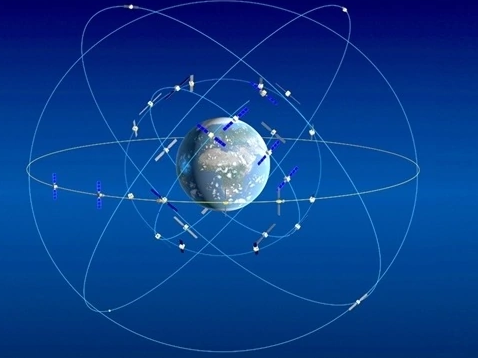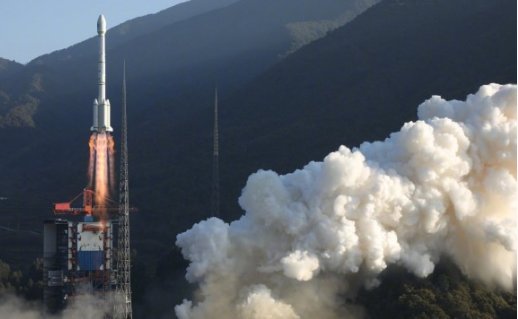On December 27, the State Council Office held a press conference on the first anniversary of the global service provided by the Beidou III system. Ran Chengqi, director of the China Satellite Navigation System Management Office and spokesperson of the Beidou Satellite Navigation System, stated that in 2019 all Beidou-3 medium-Earth Earth Orbit (MEO) satellites will be networked, marking the completion of the deployment of the core constellation of the Beidou-3 system. By June 2020, it plans to launch two more geostationary orbit satellites, and the Beidou-3 system will be fully completed. In 2025, a more comprehensive, integrated, and intelligent national integrated positioning and navigation timing system with the Beidou system as the core will be built.
On December 27, the stock prices of satellite navigation companies such as Huashang Navigation, Zhonghaida, and Big Dipper all rose to varying degrees. Data show that the total output value of China's satellite navigation and location service industry reached 301.6 billion yuan in 2018, an increase of 18.3% over 2017. Among them, Beidou contributed 80% to the core output value of the industry. Ran Chengqi predicts that the scale of this industry will exceed RMB340 billion-350 billion this year, and it will maintain a growth rate of about 20% in the future.
Build a characteristic application service system
Ran Chengqi said that on November 19, 2018, China completed a basic system consisting of 19 Beidou navigation satellites, and will provide global services by the end of the year. This year, China has completed the launch of 7 arrows and 10 stars, and completed the deployment of a core constellation consisting of 24 medium orbit satellites. "Based on the ability to provide global services last year, it is more reliable, with higher accuracy and better performance. The completion of the deployment of the core constellation indicates that the Beidou III has entered a critical stage of finalization."
Currently, Beidou is used for satellite navigation of most smartphones. Ran Chengqi said that in addition to providing basic services of positioning, timing and navigation, Beidou satellite navigation system also has many characteristic application service systems.
The 1.0 version of the satellite navigation system application service system released on the site shows that there are six types of applications, including satellite-based enhanced services, precision single-point positioning services, regional short message communication services, global short message communication services, ground-based enhanced services, and international search and rescue service. According to Ran Chengqi, these six types of distinctive applications are the characteristics that distinguish Beidou from other innovative applications of navigation systems.
While improving the system construction, the service capability of the Beidou III system is also improving. According to Ran Chengqi, Beidou System has improved the system's intelligent operation and maintenance capabilities to ensure continuous and stable operation. Service performance, availability, and continuity have reached the expected requirements. Performance levels and elevation positioning accuracy are better than 5 meters. Next year, the BeiDou-3 system will provide users with diversified services with higher accuracy, better performance and stronger functions.
Ran Chengqi said that the construction of the Beidou short message application service platform has been started. It will be combined with mobile communication technology in the future to provide more convenient services for mass users. "The volume, weight, and power consumption will be greatly reduced. It will enter smart terminals such as mobile phones. This is a very important innovative service."
In terms of ground-based enhancement services, Beidou Satellite Navigation System combines traffic, surveying, mapping, earthquake, meteorology, and land and other industry monitoring station network resources. More than 2,000 reference stations have been built to provide real-time meter-level, decimeter-level, and centimeter-level enhanced positioning accuracy service. At present, the service has more than 400 million users worldwide and provides more than 1 billion services per day.
Ran Chengqi revealed that with the advent of the 5G commercial era, Beidou is accelerating the integration with new technologies such as new-generation communications, blockchain, and artificial intelligence. The business integration of Beidou with traditional applications such as transportation, agriculture, forestry, animal husbandry and fishing, and power and energy has continued to deepen, the scale has been further expanded, and the results have been further manifested. For example, the dynamic monitoring system for operating vehicles constructed and operated by the Ministry of Transport has more than 6.5 million vehicles connected to the network, and it is making in-depth progress in railway transportation, inland navigation, ocean navigation, air transportation and transportation infrastructure construction management.
Industrialization takes another step
Ran Chengqi introduced the latest progress of Beidou industrial chain industrialization at the press conference.
22nm process RF baseband integrated navigation and positioning chip supporting the new signal of BeiDou III, which is smaller, lower power consumption and higher accuracy, has achieved large-scale applications; a new generation of BeiDou high-precision antennas, boards, and broadband RF chips Research and development of other series of products have been completed, and the performance indicators have continued to improve, and they have been equipped for large-scale application and promotion. Overseas mainstream manufacturers have launched basic products of the new signal of Beidou III.
According to the "China Satellite Navigation and Location Services Industry Development White Paper (2019)", the number of enterprises and institutions in China's satellite navigation and location services industry is currently about 14,000, with more than 500,000 employees. As of the end of 2018, the total number of listed companies and NEEQ companies in the industry was 51. Key technologies such as domestic Beidou chips and modules have made further breakthroughs in 2018, with performance indicators comparable to similar international products, and have formed a certain price advantage. By the end of 2018, the cumulative total of China's satellite navigation patent applications had exceeded 60,000, ranking first in the world. The number of patents published in 2018 reached 12,684, breaking a new high again.
The above white paper shows that in 2018, China's regions with traditional development advantages in satellite navigation and location service industries will further increase their efforts and comprehensively promote the innovative development of the Beidou industry. In 2018, the five major areas of satellite navigation and location service industry development in the Pearl River Delta, Beijing-Tianjin-Hebei, the Yangtze River Delta, central and western regions achieved an overall output value of 238.8 billion yuan, accounting for 79.6% of the total output value of the national satellite navigation and location service industry.

 小任班长的博客
小任班长的博客 

